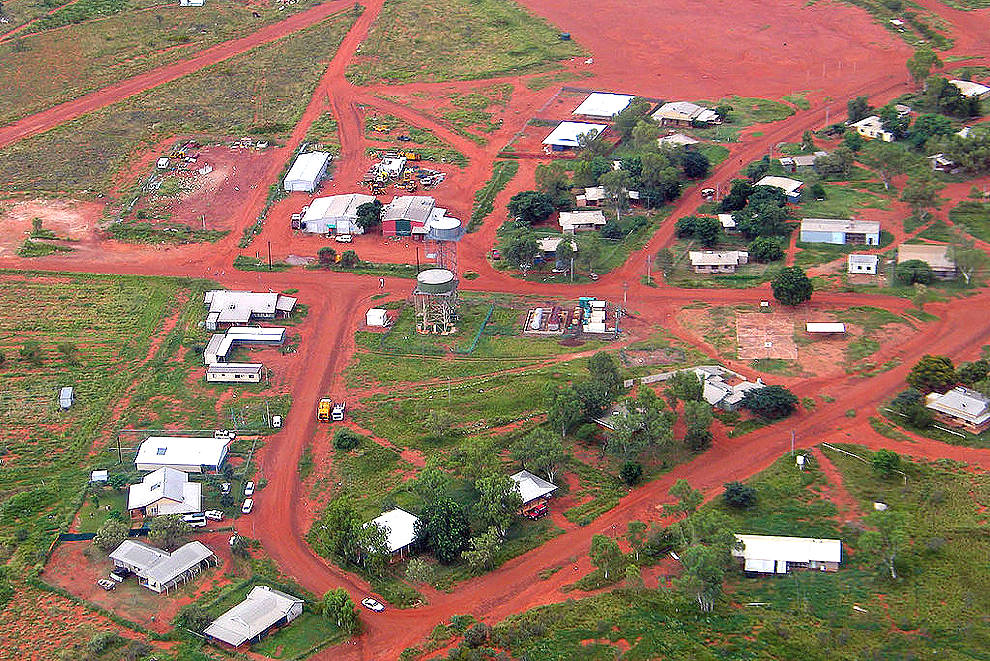When the WA government issued a draft of its first independent policy on Aboriginal development, Resilient Families, Strong Communities: A Roadmap for Regional and Remote Aboriginal Communities, in mid July, it signalled the final act in a drama that began with the failure of WA land rights in 1985. This is a story of agreements made and broken between the state of Western Australia and the federal government – agreements not assessed by committees of parliament and not made transparent to citizens. It is also a story of fundamental changes in policy that neither the state nor the Commonwealth has seen fit to run past the citizenry, let alone the Aboriginal people most affected.
A new roadmap for resilient Aboriginal families and strong communities is needed not just in Western Australia but also in all remote areas of Australia. It is needed because the Commonwealth has overturned the forty-five years of policy consensus under which it funded Aboriginal housing, local roads, water and electricity supplies, sanitation and community administration. The instruments of choice were the bilateral agreements with the states that followed the abolition of the Aboriginal and Torres Strait Islander Commission in 2005, reinforced by the National Partnership Agreement on Remote Indigenous Housing, signed in 2008.
The new WA roadmap has been sponsored by child protection minister Andrea Mitchell and regional development minister Terry Redman, and reflects this rather odd parentage. A good deal of it promises a re-engagement with Aboriginal early childhood and education in remote areas, and with adult training and employment. The remainder sets out a plan to channel money to a few large communities and towns while leaving the majority of smaller communities to fend for themselves or, as the roadmap puts it, be “supported to become self-sufficient over time.”
This is deja vu all over again. The Northern Territory went down this road, under similar pressure from the Commonwealth, in 2007, issuing Pat Dodson’s discussion paper in 2009. It would be nice to think that Western Australia could jump forward to the Territory’s recent rethink of its Growth Towns and Working Future policies, which now see the opportunity for employment in smaller communities and the essential links between them and the larger centres. But the statutory and fiscal differences between the Territory and other states may well mean that Western Australia will be stuck with the first, more draconian, version of a policy that threatens massive social disruption.
The roadmap may yet point in the right direction, but its release is also an opportunity to review how we set out on this journey.
When the anthropologist Kim Akerman produced his map of Aboriginal trading centres in the Kimberley region in 1980, he identified twenty-five Aboriginal communities. Six of them were in towns, nine on ex-mission reserves, and ten on cattle stations (most soon to be expelled). Between 1980 and 1985, when I produced a similar map for my PhD thesis, about fifty communities were established. By 1995, when I was preparing the map for a book, there were 150.
Today, the roadmap tells us, there are 244 communities in the Kimberley and Pilbara regions, with at least 175 in the Kimberley alone. In November 2014, WA premier Colin Barnett threatened to close all of them down. What happened in the years it took to build these communities? How did their existence come to be threatened and then offered a partial reprieve under July’s roadmap?
Most remote WA communities were established thirty years ago by the Commonwealth, in partnership with the government of Western Australia, as a way of recognising the national passion for land rights and Aboriginal traditional culture in a way that least alienated the state’s highly conservative electorate.
The Burke Labor government had won office in February 1983, and Bob Hawke’s Labor took government federally in the following month. Land rights had featured in both their election platforms. Clyde Holding, Hawke’s Aboriginal affairs minister, declared that human rights should override states’ rights and committed the Commonwealth government to legislate a scheme of national land rights.
After a two-year delay and a statewide inquiry led by Paul Seaman QC, the WA government introduced its land rights legislation. The bill failed in the state’s upper house. The minister of the day, Keith Wilson, barely disguising the government’s relief to be rid of this political hot potato, told the Canberra Times that “Aboriginal people have to see and accept that the major task before them is to commend themselves to the rest of the population.” They are still trying to do that. There never has been state-based land rights legislation in Western Australia.
The failure of the state legislation left the way open for federal Labor to legislate. But it, too, failed to follow through on its promise. Having pinned their hopes on Seaman and then on Holding, Aboriginal representatives were devastated. As the late Puggy Hunter, a revered health advocate, told a review of the Kimberley Land Council in 1989, the defeat “just knocked the shit out of everybody”:
Everybody just felt pissed off. I think they really felt they had a case… but it all fell through. The Land Council went really out there. It pushed itself. It was like one last big throw.
The Commonwealth stepped in with cash and an alternative plan called the Aboriginal Communities Development Programme, or ACDP. The Commonwealth committed $5 million over five years in cash, and the state government the same amount as in-kind administrative support, to create the communities on the Aboriginal homelands that we came to accept as part of the landscape.
Once, in conversation with one of the bureaucratic architects of this scheme, I suggested it was a Commonwealth compensation package for walking away from national land rights. He angrily declared that it was nothing of the kind. So why did you do it? I asked. He was emphatic: Because it was right! Those were the days, before the triumph of managerialism and bureaucratic churn, when Aboriginal affairs mandarins believed passionately in the Aboriginal cause.
These officials forged the bilateral agreement the Commonwealth has now walked away from. It provided funding for housing, roads, water supply (from bores), power supply (from large diesel plants), sewage treatment ponds, and community stores and offices. The state government, for its part, excised parcels of land from Crown land, mission reserves and pastoral leases, vested these in the Aboriginal Lands Trust as Aboriginal reserves under the Land Act, and leased them from the Trust to Aboriginal groups for ninety-nine years. This created the secure tenure the Commonwealth required in order to deliver the material assets for community building.
For better or worse, national policies hit hard in the localities where Aboriginal people live. While the state and Commonwealth were struggling over land rights against a fearful public and a rapidly retreating political class, the tail-end of the policy of dispossession from pastoral stations and removal of support for missions was causing havoc in outback towns. This failed assimilation policy segregated remote-area Aboriginal groups in refugee camps on the edge of towns. Centres such as Fitzroy Crossing and Halls Creek swelled from populations of a few hundred to several thousand almost overnight.
The poverty of these shanty settlements bred two opposite reactions. An epidemic of alcohol addiction, violence, malnutrition and spiralling ill-health developed. And a social movement was born, producing community-run support agencies like Marra Worra Worra, the oldest Aboriginal resource agency in the Kimberley. Strong leaders emerged and, backed by their own organisations, took the opportunity of the ACDP homeland settlements scheme to return to traditional lands and cut the cycle of addiction and violence affecting their lives in the towns.
Outstations, as they were called then, developed rapidly from bough shelters and tent flies into recognisable hamlets, villages and small towns. They ticked over, mostly peaceably, for thirty years, supported by federal housing and municipal services grants, the Aboriginal work-for-the-dole scheme CDEP and, in some cases (notably on the Ngaanyatjarra lands and in Kununurra), community-owned social enterprises, including building and trucking companies, community stores, and art centres.
In 2006, following the abolition of the Aboriginal and Torres Strait Islander Commission, or ATSIC, the Commonwealth began implementing its plan to withdraw. ATSIC’s abolition allowed a long-running undercurrent of monocultural, managerial policy advocacy to finally break through in Canberra. Simply because the Commonwealth could make policy, these sceptics believed, there was no requirement that it should, nor that it must shoulder the economic burden. This stream had always existed, as H.C. “Nugget” Coombs’s reminiscences about the Council for Aboriginal Affairs, in his book Kulinma, show, but now they were in the ascendant.
Coombs had fought this view vigorously, yet it had nearly triumphed in 1992, the first year of the new Council of Australian Governments, or COAG, in the National Commitment to Improved Outcomes in the Provision of Services for Aboriginal People and Torres Strait Islanders. Prime minister Bob Hawke was presiding over a period of “new federalism” in which all manner of Commonwealth powers, including taxation, were mooted to be repatriated to the states. But his leadership rival, Paul Keating, had warned against this tendency – including in Aboriginal development – in a speech to the National Press Club in October 1991. Within weeks, Keating had prevailed over Hawke and taken the leadership. He and his minister Robert Tickner gave ATSIC and its regional councils the necessary backing to support remote development for the next fifteen years.
Keating’s successor, John Howard, exemplified the conservative tendency. Literally from day one, at his first press conference as prime minister, Howard sharpened the knife for ATSIC, declaring an audit of all ATSIC-funded organisations. In his third term he was able to abolish the organisation altogether. Indigenous programs were mainstreamed, and the result had all the inevitability of a slow-motion train wreck.
The takeover of ATSIC functions by mainstream agencies provided the Commonwealth retreat from Aboriginal development with its devastating logic. The Commonwealth generally doesn’t provide public housing; in Aboriginal communities it had. It doesn’t provide water, electricity, sewerage; in Aboriginal communities it had. It doesn’t do local roads; it doesn’t do primary healthcare; and its mainstream agencies were not equipped to take over these responsibilities (with the exception of health, where Aboriginal primary healthcare had sat comfortably within the mainstream health department for decades). Here was the opportunity, indeed the clear path of rational public administration, to repatriate Aboriginal development to the states.
In 2006, the year after ATSIC was abolished, Western Australia signed a bilateral agreement with the Commonwealth on Indigenous affairs. According to a state government discussion paper, the agreement sought to regularise housing, infrastructure, and essential and municipal services “such that the Western Australian government, and local governments, would assume responsibility for the delivery of services to Indigenous communities in a manner consistent with what they would normally provide to town sites.”
The Northern Territory signed a similar agreement in 2007. South Australia, alone among the states with dispersed remote communities, held out. The commitment was reinforced in the national partnership on remote Indigenous housing signed by all state and territory first ministers in December 2008.
According to a report in preparation by the Australian Housing and Urban Research Institute, the transfer of Aboriginal housing to state public housing authorities has largely been successful. It has required a creative and flexible approach to the underlying land tenure of housing blocks, which Western Australia managed well. The transfer of municipal services may not go quite so smoothly.
In Western Australia, local governments are not required to service Aboriginal communities and there is no statutory Aboriginal equivalent of local government. Queensland operates a two-tier system, with Aboriginal municipalities coming under their own legislation, distinct from the mainstream shires that surround them. The Northern Territory created local government shires across most of its land in 2008, and these are Aboriginal-controlled by weight of numbers. Remote areas of South Australia remain unincorporated and without any form of local government.
These disparate arrangements for mainstreaming municipal services in remote settlements are a challenge in themselves. More challenging than this, though, is the fact that the system of funding of local government throughout Australia is broken for white and black alike.
In practice, despite the fiscal equalisation intention of both the GST and the Local Government (Financial Assistance) Act, federal funds are distributed on a per capita basis overwhelmingly to metropolitan areas that are quite capable of raising income from rates and services without this assistance. The rich get richer. The amounts that trickle through to rural and remote regions are often not enough to replace decaying infrastructure, let alone meet the development challenge of impoverished Aboriginal communities.
Roadmaps are useless if the road is too rough to travel. If our remote communities are to thrive, rather than wither at the end of the track, the Commonwealth must re-engage with Aboriginal development in the spirit of the 1967 referendum, and the system of remote and rural equalisation funding must be entirely overhauled. Incremental changes introduced behind closed doors by pragmatic bureaucrats have the tendency to evolve into fully formed disasters before the public notices. Burdening local governments with responsibilities previously met by the Commonwealth threatens to be the tipping point for rural and outback decay. Before it reaches that point, these changes should instead be used as a springboard for a national inquiry into sustainably funding the outback for black and white alike. •




